|
|
.US
PROFILES
- Feature stories about .US Buyers, Sellers and
Website Developers.
Follow us on Twitter: @AmericanDomains
|
|
|
How
Early .US Adopter Steve Orosz Went from Welding to the World
Wide Web |
|
|
By Ron Jackson
One
of the things I have most enjoyed since launching American
Domain Names on July 4 has been hearing from some of the
earliest .US domain investors. Many of them
recognized the potential value of good domain names before I
had even arrived on the scene in late spring of 2002. That
was shortly after .US had been opened to all American
citizens after previously being reserved for government, law
enforcement, schools and similar special uses. By the time I
got here, the .US extension was already in general
availability with most of the best domains having
already been claimed in the "land rush" period
that preceded the public release. My best .US domains
weren't acquired until original registrations started
expiring for the first time and a lot of great names became
available again through the drops. |
|
Steve
Orosz was one of those who was in the .US vanguard that
preceded me, so I connected with him to get the details on
what brought him into the domain business and the role .US
played in that. Steve also shared some of the domains he has
acquired along the way and the story behind his latest sale,
made a few days ago, to a commercial and residential
plumbing company that operates in multiple U.S. states. It's
all in the interview below.
ADN.US:
Steve, as a relatively new field, almost
everyone involved in the domain business came into it from some
other line of work. What were you doing when you first
got interested in domains and why did you decide to start
buying them?
Steve
Orosz:
In 1999, I was working in Chicago
as a pipefitter/welder. Back then, the newspaper was
still the go-to source for daily info while at work. I read
an article that told of the value and scarcity of good
domain names and that all 3 letter .com combinations
were registered. I found that to be somewhat
unbelievable and couldn't understand why. Then it hit
me....scarcity was the driving factor. Kind of like prime
real estate, only "online" real estate.
|

Steve
Orosz went from welding to the
World Wide Web. His portfolio includes:
Welder.us, Fabricating.us, Steelworkers.us, and Ironworkers.us. |
|
The
company that I worked for had just recently installed a
computer with internet access in our break room and was
intended for locating and ordering parts and equipment.
I spent practically every available moment finding out about
this new (to me) phenomenon that was domain names.
My first 5 or 6 registrations were through Register.com at
$35 per reg. It didn't take long for me to get
sucked in to registering more. I quickly discovered less
expensive registrars. I also learned that pricing wasn't
everything. Remember Registerfly? (Editor's
Note: Registerfly was a registrar that collapsed, leaving many customers in
limbo for months before the chaos was sorted out). That was
a real nightmare and luckily, I was able to transfer out all
of my names held there to another registrar.
In
the beginning of my domain journey, I spent numerous hours
on Afternic. The current site bears little
resemblance to what Afternic used to be. In it's infancy,
Afternic had a discussion board that allowed you to
post about domains. There were many opinions discussed and
occasionally an inside trick or two was revealed. It
was very much about traffic and pay per click back then.
I wound up at DNForum after Afternic changed.
Some of my more valuable domains were purchased there for
next to nothing. I wish that I still owned a few that I sold
for a meager profit. Who knew!
ADN.US:
What specifically attracted
you to .US domains as an investment or TLD to build
on?
|
Steve
Orosz:
I was aware of the release of .US to the American
public, but merely watched as it unfolded. Early on,
my first dozen or so .US domains that I owned were
purchased from others on DNForum for about twice
what they had spent registering them. It was
simple to view lists and choose domains that you
liked instead of spending hours and hours searching
for availability. Of course, there seemed to be
a much higher quality of keyword(s) domains in .US
versus trying to find something in .com. I
really believed that .US would gather steam
much like many of the other country codes have done.
I
thought too, that .US would perhaps be a safer haven
than .com had proven to be. There were hoards of
online scams and the vast majority of them operated
under .com. European, African, Asian fraudsters were
(and still are) out in full force. I thought
initially that U.S. residency requirements
for registering a .US domain would have offered some
level of safety for users, but it appears to have
only thwarted potential foreign investors
from considering .US for an online presence
(Editor's note: Non .US residents can own .US
domains if they use them to operate a
business that serves American customers) .
I
also believed that you might see a push for Americans
seeking American products. That would be right
in line for a registration restricted .US domain and
website. Sometimes, I think that I think too
much. Think about that! |

Orosz
also has a passion for golf - one that is reflected in
his portfolio as well: GolfEquipment.us, GolfPro.us,
Irons.us. |
ADN.US:
Considering how popular the local ccTLDs is in other nations
around the world, why do you think .US has been overlooked and
under-utilized since it opened to all Americans in 2002?
Steve
Orosz:
The primary factor has been, simply put.....demand. In
the awakening of the internet in the United States, the .com
namespace was what most people knew. And even if you
considered an alternative it was usually .net. By
2002 when .US was presented, .com was entrenched in
everyone's mind and anything else was confusing.
Neustar
(the former administrator of the .US TLD) did little to
promote .US like they should have. Kind of like the Chicago
Cubs business plan for decades - spend little, reap the
rewards, and don't worry about the seats because there are
enough fans to keep it profitable. I hope that GoDaddy
(who bought Neustar this year) sees the potential for
.US and brings it more to the forefront when registration
queries offer alternative suggestions to .com.

Orosz and his
family live in northern Indiana now and his portfolio reflects his
priorities today - OurFamily.us, iRun.us and X-C.us. The
latter is the
abbreviation for cross country sports. Steve's daughter is
headed to Arizona State University where she will be on the
cross country team.
ADN.US:
The Covid pandemic has forced many business
to develop an online presence or improve an existing one. By
almost all accounts, this has created a boom in
aftermarket domain sales. Have you been seeing this with your
.US holdings.
Steve
Orosz:
Somewhat. Interest in all extensions has improved. This
includes .US. The largest boost for any company from
circumstances surrounding Covid was Zoom.us.
You could argue Amazon benefited monetarily more than anyone,
but I bet that Zoom.us saw the largest jump percentage-wise
over anyone. That exposure for .US proves that the extension
is viable and worthy of investment.
I
read somewhere that the pandemic caused a three to five year
springboard for businesses that were considering a
transition to online. If you are wanting to create an online
presence, you must have a decent domain. Many are
now finding out the limited availability of decent
domains.
ADN.US:
I understand your most recent .US sale was IronHorse.us
and the $3,500 price you got was a good one for a
two-word .US domain. Tell us about the buyer and how that
transaction happened?
Steve
Orosz:
They contacted me via my "for sale or lease" landing
page. The offer was minimal, but enough to warrant serious
consideration. I countered with an amount that I deemed
would make me happy. It was accepted without
hesitation and they almost immediately initiated an escrow
transaction. All went as smooth as usual and they are excited
and happy with their acquisition. I suspect (who knows)
that they may have paid more, but I set the price that made me
content and sealed the deal. No regrets.
|
ADN.US:
The buyer, Iron Horse Companies LLC, just
got the domain a few days ago, so we don't yet know
exactly how they will use it yet but, as an American
commercial and residential plumbing company operating
in multiple states, IronHorse.us couldn't be a
better fit.
Steve
Orosz:
If you visit their current site, you will see
"Iron Horse" written on all equipment,
hardhats, tee shirts, etc. Their primary domain
- |
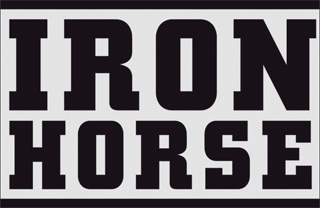
|
|
IronHorseCompanies.com
- resolves to a long acronym - ihcaz.com
(for iron horse companies Arizona) - which was their
attempt to escape the long domain for a shorter one.
Still confusing. IronHorse.us was the perfect solution
for them. Perfect! |
ADN.US:
In a world of hundreds of domain extensions, where do you see
.US going from here?
Steve
Orosz:
I think that for many of the new extensions, the vast majority
of the registrations made will never see the light of day.
This holds true for every extension, maybe excluding .com.
Even then, I suspect that many, many .com registrations
do not resolve to a working commercial website. Eventually,
the new extension registrations will run out of gas and most
renewals will not happen. Pure speculation by
registrants, which (by the way) is the name of the game.
Call
it wishful thinking, but I believe that .US domains will
gain visibility and acceptance here in The United States
and will also attract foreign investors who understand the
value of the US market. People outside of the US
understand the value of a good Country-Code domain. Ask anyone
in Germany (.de), Australia (.au), The UK (.uk),
Italy (.it), etc, what the primary domain extension is
for them. Many will say ".com", but after that, it
is always their own country's ccTLD.
ADN.US:
Thanks for taking time to share your
thoughts Steve. It has been a pleasure to catch up with you.
Steve
Orosz:
Thank you so much for the opportunity to talk domains!
Posted
July 27, 2021. Permalink for this story:
https://www.adn.us/profiles/2021/my.us.story.orosz.0727.htm |
|
|
My
.US Story - How a .US Ad in a 2002 Computer Magazine Changed
My Life |
|
|
By Ron Jackson
In
May of 2002 I was at a key crossroad
in my life. I was coming to the end of what was already my
second career and had no idea which direction I should go
next. After spending my first 20 years in the job force as a
broadcaster (the first four in radio as a DJ and newscaster
and the next 17 as a TV reporter in Florida), I had a nice
12-year run in the music world. In 1988 I had opened what
would be the first in a string of record and CD stores in
Tampa but the twin nuclear blasts of music streaming
on the Internet and CD burning wiped the stores out
in 2000. The same thing happened to the great chain stores
like Tower Records, Sam Goody's and many
others, so I wasn't the Lone Ranger, but that didn't make it
any less painful.
|
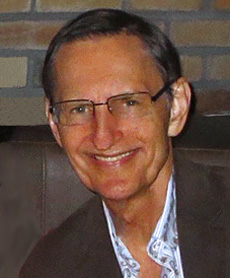
ADN
Editor Ron Jackson |
|
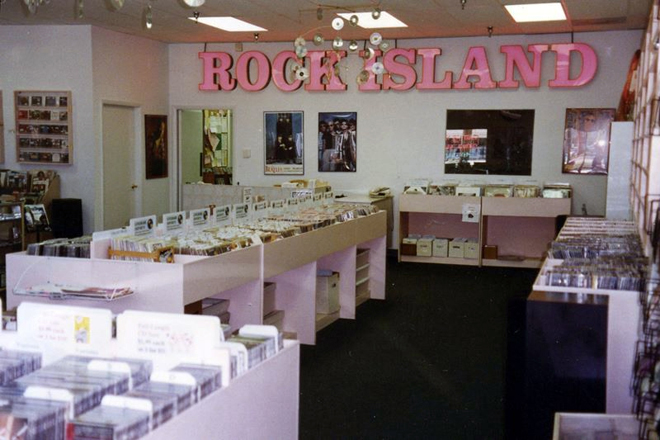
Inside
my last Rock Island record store in Tampa, Florida in 2000 -
the year it closed.
I
tried to limp along as an online-only music retailer
for a couple of years but by the spring of 2002 the writing
was clearly on the wall and I was going to have to start
over from scratch. The only thing I knew was that my
next venture had to be on the Internet. The
web was blowing up one traditional industry after another
and I had no interest in getting hit by another cruise missile.
The question was, what could I do?
|
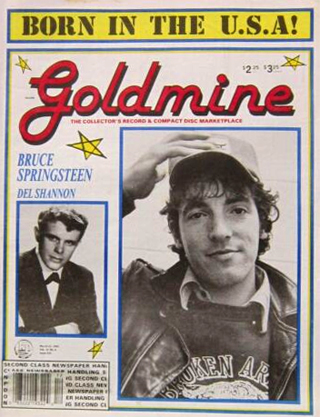
A
1990 issue of Goldmine Magazine |
I
did know that the web offered some tremendous
advantages over brick and mortar. A lot of my
music business comprised of selling collectibles by
mail order. In the 80s and 90s, there was a
national collector's magazine called Goldmine
and I spent a lot of money taking full page ads in
it. In 1997, when the web was really starting to
gain traction, I put up my first website,
building MusicParadise.com for the
business (the store, as you saw above, was actually
called Rock Island. I'll get to the
reason for that disparity in a moment). With the
website I found I could save an enormous amount
of money by cutting my full page magazine ads to
1/16th of a page that directed people to the
website. There I could list as many items as I
wanted and show them in full color. In the
magazine I was limited to black and white text
listings and very short descriptions. There was no
comparison. |
Doing
that helped keep us alive for a few more years but it
couldn't prevent the inevitable collapse. Records had fallen
out of favor and CDs were never as big with collectors as
vinyl was (indeed vinyl has made a comeback in recent years
that I never would have predicted). When I closed the last
store the domain name was about the only valuable asset
left (after I learned about domains and domain monetization,
there was a long stretch of time when I was earning over
$100 a day from just the residual traffic to
MusicParadise.com - but that is getting ahead of the
story).
|
One
thing I remembered about getting my first domain
name in 1997 was how annoying it was to find
it was already taken! We were Rock Island
but a financial firm of the same name already had
the .com domain and that was when there were
virtually no other options other than .net
and .org. It was before the first
"new" TLDs arrived (.info and .biz) and I
couldn't even consider my own country code
extension, .US, because it was reserved
for |
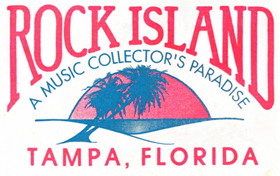
|
|
government,
schools and a few other special uses. I was
fortunate to have one way out though. Our logo said "Rock
Island - A Music Collector's Paradise". So,
I checked MusicParadise.com and it was available -
hooray! After we closed the brick and mortar store we also
switched our business to Music Paradise to match the
domain. |
|

|
So,
there I was in the spring of 2002, knowing I needed
to do something new on the Internet and that
getting the exact .com domain I might want was
getting harder every day. I didn't have much to go
on when the latest issue of PC World magazine
arrived in my mail box. I had grown to really love
computers for how much easier they made everything
in my life, from running a business to near instant
communications through email and starting building
my own. Still, the thing that really caught my
eye when I opened the cover was a full page
ad placed by Neustar who was then
the administrator of the .US TLD (GoDaddy
wound up buying Neustar last year and a subsidiary
of the company administers it now).
The
ad was placed to alert Americans to a major
change - .US had officially been opened up to
all U.S. citizens as well as anyone who did
business in America. Not only that, second-level
registrations were available |
|
for
the first time. In domain names, the extension is
the first, or top, level (hence the term TLD for top
level domain). The second level is the word(s) or
characters before the dot. For example MusicParadise
is the second level in my MusicParadise.com domain.
Prior to April 2002 .US domain could only be registered
at the 4th level - which add more dots and
some VERY long domain names)! |
At
that time. .US had a very specific naming hierarchy that
started with the registrant's.name, then a dot, a
locality name (like a city or a county, then a dot, a
state abbreviation, then a dot, and finally the top
level - .us! Whew! Talk about a mouthful
and an impossible to remember domain name. I live in
Hillsborough County (Tampa), Florida and I remember that in
those days the sheriff's department had a web address
that stretched across the back of the car! I don't
remember it exactly (no surprise there) but it was something
like www.sheriff.hillsborough.fl.us. It was like,
"Hey citizens! If you need us don't even bother trying
to contact us through the web!"
.US
was launched in 1985 but did not get out of that
straightjacket until 2002 - 17 years later. Is it any
wonder that .com, with a huge head start built through all
of those years when the hamstrung American ccTLD couldn't
compete, became the dominant extension? That's no knock on
.com, it's just the way the cards were dealt. .Com went on
to become the standard and a truly great TLD that
justifiably commands high aftermarket prices for any top
quality term in the extension. It's only potential
drawback is its own popularity. With over 155 million of
them now taken, if you need a specific word, popular term or
short-acronym it will be taken in .com and carry either a
significant price or a not for sale at any price sign.
|
Given
my own experience of having to settle for a
business name other than my own in 1997, you can see
why this huge change at the .US registry in 2002
caught my attention. .US domains were very
affordable with stable renewal prices (just as
they are today), since it was just opened to all, a
lot of good names would be readily available
and the TLD was the official domain extension of
the United States of America. I still did not
know what business i might go into but I decided I
should go ahead an get some of these domains in
areas where I had an interest. Then |
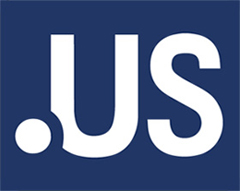
|
|
I
would have a pool of suitable options to choose from
when the time came to move. The idea of reselling
any of those domains never once crossed my mind. I
had no idea that the "domain
business" was a thing. I couldn't envision
how a domain could be worth anything more than the
registration fee unless it already had something
built on it. I soon learned how wrong I was though. |
As
I started registering a few .US domain, primarily in the
fields where I had the most experience, media and music, I
started Googling terms like "domain names" to try
to get some more ideas for a business. One of those searches
took me to DNForum.com in mid 2002. At that time,
that is where just about all of those involved in the
nascent "domain investment" field hung out. I
started reading the posts and couldn't believe what I was
seeing. These people were actually buying and selling
the domain names alone. I thought, "You can
really do that?...and there are buyers for them?". The
answers were yes and a qualified yes. There
were buyers for them but only if they were good
domains. Coming to understand what a good domain is was the
hard part!
|
As
a journalist with a good command of words and
language, I thought I might have died and gone to
heaven - could any business be more tailor made
for me? If it had only been that easy. It took a
couple of years with a lot of trial and error,
throwing things against the wall to see what stuck
(not much of what I bought did in the early
days). Eventually I did acquire a grasp of the |
|

|
finer
details - what kinds of category-defining names a
business would seek, why are short acronyms so
popular (brevity is important on the web - short
names are more memorable and they prevent
a lot of typos - it's why American Domain Names
is built on ADN.US. I also have
AmericanDomainNames.us but it redirects to ADN.US in
case anyone does type in the whole thing. You also
have to learn where you can get domains at the best
prices, where you can sell them to end users and so
much more that is beyond the scope of this article. |
In
my quest to learn more about the business, I tried to find
more resources, especially a trade magazine about the domain
industry. None existed so, again as a journalist, I
decided I'll start one myself then - and that's what I did
on New Year's Day 2003 when I launched DNJournal.com.
Over 18 years later it is still going strong. While I have
maintained my interest in .US to this day, I never wrote a
lot about the TLD in DNJ because I saw it as a potential conflict
of interest in a publication meant for the entire industry.
Still, in the back of mind, I thought some day I need
to find some way to do something for .US because I
never would have found this industry without our country's
TLD planting the seed that led me to invest in
domains (mostly .com, .org and .us for me - but that
is a personal choice for every investor). I would not have
started DNJournal.com which has taken me all over the world,
allowed me to meet an incredible array of amazing people and
given me the freedom to do pretty much anything I want to do
in life. The domain business has paid for cars, houses,
college educations, vacations and on and on. How could I
not be grateful for the introduction .US gave me to all
of that?
|
Now,
don't get me wrong. I didn't get any of my domains
for free and I have bought and sold thousands
of .US domains over the past 20 years. I have often
mused about how much money the .US registry made
from me alone - just one person - from that one
magazine ad (I never saw another). I have all of
the records and the number is in six figures.
When they say it pays to advertise, I am
exhibit number one! So I guess you could say I don't
owe .US anything. Those investments have provided a
modest but profitable revenue stream that has become
stronger than ever over the past year (my guess is
the pandemic induced stampede to Zoom.us helped
.US recognition and the rush by businesses to get
online is also boosting business for many TLDs). I
still think the entirety of how the domain
industry has |
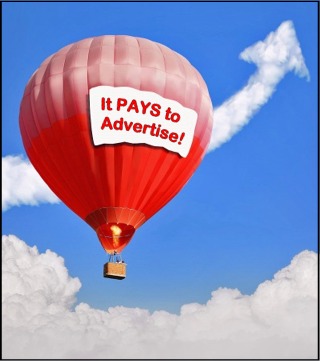
Image
from Bigstock |
|
changed
my life leaves me owing .US something more. Of
course, this site makes business sense for me too.
If ADN, or anything else, helps boost .US
recognition and utilization my holdings increase in
value. |
So
here we are! After 19 years, I finally arrived at American
Domain Names as a possible way to help a TLD and
community that has helped me so much along the way. With so
many other TLDs booming today and business demand for
an online presence zooming off the charts, .US should
have a share of the market that is more commensurate with
its global peers. This site may not even move the needle,
but it finally fulfills a promise I made to myself. It also
reminds me that it took 19 years to fulfill that
promise, so I probably shouldn't make any more!
Posted
July 4, 2021. Permalink for this story:
https://www.adn.us/profiles/2021/my-us-story-ron-jackson-0704.htm |
|
|
|
|
|
|
No
photos, text or content of any kind may be copied from this site
without written consent.
ęCopyright 2024 American Domain Names
(ADN.US) - an Internet Edge, Inc. company.
|

|
|
|
|



